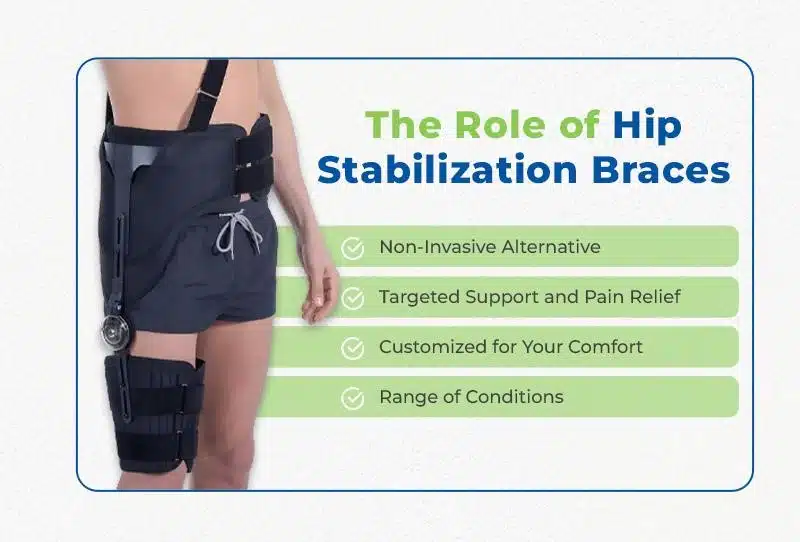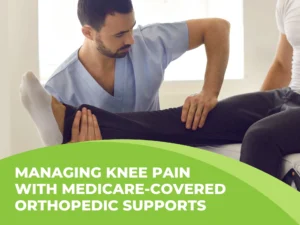Hip pain and instability are not only physically discomforting but can also have a profound impact on your overall quality of life. Whether you’re struggling with everyday activities, unable to enjoy your favorite pastimes, or simply seeking a solution to regain your mobility and comfort, addressing hip issues is a crucial step towards a better life. This guide aims to provide you with valuable insights and guidance when it comes to choosing between two prominent options for hip condition management: hip stabilization braces and hip surgery.
The Significance of Hip Stability
Before delving into the comparison between hip stabilization braces and surgery, it’s essential to understand the vital role hip stability plays in your daily life. The hip joint, being one of the largest joints in your body, shoulders the significant responsibility of supporting your weight and enabling a wide range of movements. It’s a complex joint that can be prone to instability due to various factors, including injury, wear and tear, or underlying medical conditions.
Hip Stabilization Braces vs. Surgery: Weighing the Options
When it comes to addressing hip pain, instability, and related issues, individuals are often faced with a critical decision: should they opt for a hip stabilization brace or undergo hip surgery? Both options have their merits and considerations, and choosing the right path is essential for achieving the best possible outcome for your hip health.
The Role of Hip Stabilization Braces
Hip stabilization braces, also known as hip orthoses or hip abduction braces, are non-invasive devices designed to provide essential support and stability to the hip joint. These braces are commonly recommended for individuals dealing with a range of hip-related problems, including hip dysplasia, hip labral tears, and post-operative recovery. Here, we’ll delve into the key aspects of hip stabilization braces to help you make an informed decision:
- Non-Invasive Alternative: Opting for a hip brace represents a non-invasive approach to addressing hip issues. For individuals who wish to avoid the potential risks and longer recovery associated with surgery, hip braces offer an appealing alternative. They provide valuable support without the need for surgical intervention.
- Targeted Support and Pain Relief: Hip braces offer targeted support directly to the hip joint, effectively alleviating the pain and discomfort often associated with various hip conditions. Wearing a hip brace can enhance mobility and overall quality of life by promoting proper hip alignment and stability.
- Customized for Your Comfort: These braces are typically custom-fitted to ensure optimal comfort and effectiveness. This personalized approach ensures that the brace fits your unique body shape and caters to your specific needs. The tailored fit minimizes discomfort and maximizes the benefits of wearing a hip brace.
- Range of Conditions: Hip stabilization braces are versatile and can be beneficial for addressing various hip-related issues, such as hip dysplasia, hip labral tears, and post-operative recovery after hip surgery. Their versatility makes them suitable for a wide range of hip conditions, providing support and stability where needed.
The Surgical Option: Hip Surgery
When it comes to addressing hip instability or related conditions, hip surgery represents a more invasive approach compared to non-surgical alternatives. Surgical procedures for hip issues can vary significantly as they are tailored to the specific problem. These procedures may involve repairing damaged tissues, reshaping the hip joint, or addressing underlying structural problems. Here, we’ll delve into key factors to consider when contemplating hip surgery:
- Invasive Nature: Hip surgery is inherently invasive, involving incisions and surgical intervention in the affected area. This approach aims to address the root cause of hip instability or pain directly. However, due to its invasive nature, hip surgery typically results in a more extended recovery period compared to non-surgical options like hip braces.
- Potential Risks: Like any surgical procedure, hip surgery carries inherent risks. These risks include the possibility of infection, scarring, and potential complications associated with anesthesia and the surgical process itself. It’s essential to discuss these risks with your healthcare provider to make an informed decision about the best course of action for your hip condition.
- Rehabilitation Requirements: After undergoing hip surgery, rehabilitation is typically a necessary part of the recovery process. Rehabilitation may involve physical therapy and a structured program to gradually reintroduce you to normal activities. This phase can be time-consuming, and your commitment to rehabilitation plays a significant role in your overall recovery and success with surgery.
In summary, the choice between a hip stabilization brace and hip surgery depends on several crucial factors, including the severity of your condition, personal preferences, consultation with experts, recovery considerations, and long-term goals. Both options have their advantages and considerations, and consulting with healthcare professionals or orthopedic specialists is essential for making an informed decision that best aligns with your individual needs and preferences for hip health. Whether you choose a non-invasive hip brace or a surgical intervention, the goal is to enhance your hip stability, alleviate pain, and improve your overall quality of life.
Read More: Unlock Your Mobility: Hip Braces Revolutionizing Rehabilitation
Factors for Your Consideration
When faced with the decision between a hip stabilization brace and surgery, it’s essential to thoroughly evaluate various factors to make an informed choice that aligns with your specific needs and preferences. Let’s delve deeper into these critical considerations:
- Severity of the Condition: The extent of your hip condition is a pivotal factor. A hip stabilization brace can often provide the necessary support and relief for those with mild to moderate hip issues. However, if your condition is severe, with significant instability or structural problems, surgery may be the more appropriate solution to address the underlying issues comprehensively.
- Personal Preference and Comfort: Your personal preferences and comfort with medical procedures play a vital role in your decision-making process. Some individuals may have reservations about surgical interventions and prefer non-invasive options initially. Hip braces offer a non-surgical alternative that can appeal to those seeking a less invasive approach to managing hip pain and instability.
- Consultation with Experts: Seeking guidance from healthcare providers or orthopedic specialists is crucial in the decision-making process. These professionals possess the knowledge and experience to assess your specific hip condition accurately. They can provide valuable insights into the most suitable treatment option based on your individual circumstances, ensuring you receive the most effective care.
- Recovery Considerations: Consider your daily life, responsibilities, and the time you can allocate to recovery. Surgery generally entails a more extended and potentially challenging recovery period compared to the use of a hip brace. If you have a busy lifestyle or limited support during recovery, this factor may influence your choice towards a less invasive option like a hip brace.
- Long-Term Goals and Quality of Life: It’s essential to discuss your long-term objectives and expectations with your healthcare provider. Be clear about your goals for comfort, mobility, and overall quality of life. Your chosen treatment should align with these aspirations, ensuring that it not only addresses your immediate concerns but also contributes to your well-being in the years to come.
Incorporating these factors into your decision-making process can help you navigate the choice between a hip stabilization brace and surgery more effectively. Remember that the goal is to find the most suitable treatment option that provides you with comfort, stability, and an improved quality of life while addressing your unique hip condition. Consulting with healthcare professionals will ultimately guide you toward the best course of action for your specific circumstances.
The Conclusion
The decision between a hip stabilization brace and surgery should prioritize your unique circumstances, preferences, and the recommendations of medical experts. While hip surgery may be deemed necessary for severe cases, hip braces offer a non-invasive, effective approach to managing hip instability and related conditions. Consulting with your healthcare provider is the key to making an informed decision that ensures the best possible support for your hip health and overall well-being. Remember that the ultimate goal is to find the treatment option that provides you with comfort, mobility, and a better quality of life.









